Program Cost
The programs are designed to be as low-cost and affordable as possible. Current estimated costs are published in the annual ÖSYM booklet listing all higher education programs in Turkey (Yükseköğretim Programları ve Kontenjanları Kılavuzu) and are available on the web sites of individual programs (click “Links” from the top menu).
For the semesters spent in Turkey, students pay the tuition and fees as set by the Turkish university according to the framework established by the Turkish Higher Education Council. (Turkish Republic Resmi Gazete, April 28, 2007, page 26506, Article 1).
For the semesters spent at a SUNY campus, Turkish dual diploma students pay out-of-state tuition, fees, mandatory international health insurance, and any additional living expenses (such as room and board).
Because The State University of New York is a public institution of higher education, the amount of tuition charged is mandated by the Legislature of the State of New York. There are two levels of tuition set by the Legislature:
1 - Tuition for residents of New York State (“In-State”)
2 - Tuition for students from outside of the state (“Out-of-State”), including international students.
Fees cover additional costs of instruction and are set each year by individual SUNY campuses.
Cost Comparison
By spending half of the degree program in Turkey, the program is significantly less expensive than direct enrollment (all 4 years) in an undergraduate program in the United States. The value of the academic and cultural experience combining the strengths of two distinct universities in the dual diploma program is immeasurable.
Potential Tuition Increases
Annual increases in tuition is a common practice.
The cost of tuition for Turkish state universities are determined by the framework set forth by the Turkish Higher Education Council and are kept at the lowest rate possible.
According to New York State’s rational tuition policy, university centers such as Albany, Buffalo, Binghamton and Stony Brook are allowed to increase their tuition NO MORE THAN 10% with this figure being NO MORE THAN 7% for university colleges. This rational tuition policy allows families to budget the cost of education much more efficiently.
Mechanism of Payment
All tuition, fees and other costs of attendance are billed and collected directly by the relevant university (when in Turkey – Turkish university issues bills in YTL and collects from students; when in New York – SUNY campus issues bills in USD and collects from students). The 2007 directive issued by the Turkish Higher Education Council specified that the Turkish state universities must charge dual diploma program tuition in new Turkish liras (YTL) (Turkish Republic Resmi Gazete, April 28, 2007, page 26506, Article 1).
More information can be found in the “ÖSYM Kontenjanlar Kılavuzu” or the “Programs” section of our website. You can always contact our office for further information on costs.
